Balkinization
an unanticipated consequence of
Jack M. Balkin
Balkinization Symposiums: A Continuing List
E-mail:
Jack Balkin:
jackbalkin at yahoo.com
Bruce Ackerman
bruce.ackerman at yale.edu
Ian Ayres
ian.ayres at yale.edu
Corey Brettschneider
corey_brettschneider at brown.edu
Mary Dudziak
mary.l.dudziak at emory.edu
Joey Fishkin
joey.fishkin at gmail.com
Heather Gerken heather.gerken at yale.edu
Abbe Gluck abbe.gluck at yale.edu
Mark Graber
mgraber at law.umaryland.edu
Stephen Griffin
sgriffin at tulane.edu
Jonathan Hafetz
jonathan.hafetz at shu.edu
Jeremy Kessler
jkessler at law.columbia.edu
Andrew Koppelman
akoppelman at law.northwestern.edu
Marty Lederman
msl46 at law.georgetown.edu
Sanford Levinson
slevinson at law.utexas.edu
David Luban
david.luban at gmail.com
Gerard Magliocca
gmaglioc at iupui.edu
Jason Mazzone
mazzonej at illinois.edu
Linda McClain
lmcclain at bu.edu
John Mikhail
mikhail at law.georgetown.edu
Frank Pasquale
pasquale.frank at gmail.com
Nate Persily
npersily at gmail.com
Michael Stokes Paulsen
michaelstokespaulsen at gmail.com
Deborah Pearlstein
dpearlst at yu.edu
Rick Pildes
rick.pildes at nyu.edu
David Pozen
dpozen at law.columbia.edu
Richard Primus
raprimus at umich.edu
K. Sabeel Rahmansabeel.rahman at brooklaw.edu
Alice Ristroph
alice.ristroph at shu.edu
Neil Siegel
siegel at law.duke.edu
David Super
david.super at law.georgetown.edu
Brian Tamanaha
btamanaha at wulaw.wustl.edu
Nelson Tebbe
nelson.tebbe at brooklaw.edu
Mark Tushnet
mtushnet at law.harvard.edu
Adam Winkler
winkler at ucla.edu
Compendium of posts on Hobby Lobby and related cases
The Anti-Torture Memos: Balkinization Posts on Torture, Interrogation, Detention, War Powers, and OLC
The Anti-Torture Memos (arranged by topic)
Recent Posts
Judicial Constraint, Judicial Restraint, and the New Originalism
Just A Few Blogs
ACS Blog
Alas, a Blog
Althouse
Arts and Letters Daily
Atrios (Eschaton)
Bill of Health
Buzzflash.com
Buzz Machine
Cato at Liberty
Juan Cole (Informed Comment)
Concurring Opinions
The Constitution in 2020
Corrente
Crooked Timber
Daily Howler
Daily Kos
Dana Boyd
Brad DeLong
Digby (Hullabaloo)
Discriminations
Daniel Drezner
Kevin Drum (Mother Jones)
Electrolite
En Banc
Eunomia (Daniel Larison)
Fafblog
Michael Froomkin (Discourse.net)
GovLab (Beth Noveck)
Rick Hasen (Election Law)
History News Network
How Appealing
Ignatz (Sam Heldman)
The Importance of (Ernie Miller)
Infolaw
Instapundit
International Economic Law and Policy Blog
IntLawGrrls
Jacob Levy
Jesus' General
Jurisdynamics
The Kitchen Cabinet
Mark Kleiman
Law Blog Central
Larry Lessig
Lawyers, Guns and Money
Liberal Oasis
Brian Leiter's Law School Reports
The Leiter Reports
Marginal Revolution
Megan McArdle
Memeorandum
Metafilter
Mirror of Justice
The New Republic
Newseum
No More Mister Nice Blog
Brendan Nyhan
Opinio Juris
Orcinus
The Originalism Blog
Pandagon
Passport (Foreign Policy)
Overcoming Bias
Political Animal (Washington Monthly)
Political Theory Daily Review
Political Wire (Taegan Goddard)
The Poor Man
Virginia Postrel
Prawfsblawg
Public Reason
Jonathan Rauch
Raw Story
Redstate
ReligiousLeftLaw.com
Reporters Committee For Freedom of the Press
Reproductive Rights Blog
Rothman's Roadmap to the Right of Publicity
SCOTUS Blog
Seeing the Forest
Clay Shirky
The Shifted Librarian
The Situationist
Larry Solum (Legal Theory)
Andrew Sullivan
Talking Points Memo
Talk Left
Tapped
Tbogg
TechPresident
The Paper Chase (Jurist)
Tom Paine
Tom Tomorrow (This Modern World)
Eve Tushnet
Uggabugga
University of Chicago Law School Faculty Blog
Unqualified Offerings
The Volokh Conspiracy
War and Piece (Laura Rozen)
Wampum
Oliver Willis
Wonkette
Written Description
Matthew Yglesias
Yin
Your Choice of Feeds
1. XML
powered by
2. Atom Feed
3. RSS 2.0
Judicial Constraint, Judicial Restraint, and the New Originalism
JB
The distinction between judicial restraint and judicial constraint is an important new idea in constitutional theory. Both Larry Solum and Randy Barnett have blogged about it, and Solum traces it back to a 2011 article by Thomas Colby. Judicial constraint offers an important alternative to judicial restraint as a theory of judicial duty. For this reason, it is likely to be especially attractive to conservative and libertarian originalists, who hope to explain and justify robust judicial review to protect important constitutional values.
Judicial restraint means deferring to the political branches about contested questions of constitutional law. Judicial constraint means that judges act consistently with the Constitution's original meaning.
I hope you can see why this distinction might be helpful to contemporary conservatives and libertarians who want the courts to protect constitutional values. The concept of judicial restraint, developed by Progressives in the first decades of the twentieth century, argued judges should defer to the political branches in cases of reasonable doubt. Later, it was taken up by conservatives who objected to liberal judicial decisions in the middle and final decades of the twentieth century. Conservatives argued that liberal courts should defer to the judgments of political officials in areas like civil rights, civil liberties, and especially the regulation of sexuality.
However, by the beginning of the twenty-first century, the concept of judicial restraint fit awkwardly with the constitutional beliefs of today's conservatives and libertarians. (This is yet another example of what I call ideological drift.)
Conservatives and libertarians have pointed out that legislatures and executive officials often violate important constitutional norms that secure limited government, federalism, and the separation of powers. They also argue that judges have a duty to enforce the Constitution's original public meaning in order to protect constitutional rights and constitutional values. The language of judicial restraint doesn't capture this obligation very well, and often works at cross-purposes to it. Deferring to majorities in these circumstances is not a virtue; it may actually be contrary to the judicial duty to interpret and defend the Constitution.
Hence, the argument goes, constitutional conservatives should reject judicial restraint in favor of judicial constraint. The obligation of judicial restraint is based on a theory of respect for majoritarian democracy; judges should defer to the judgments of elected officials in contested cases because these officials represent majorities. Judicial constraint, by contrast, is premised on a theory of constitutional limits on majority rule, limits that are marked by the Constitution's original meaning. If the political branches overstep these limits, fidelity to original meaning requires striking down laws or executive actions. In such cases, judicial restraint is no virtue; judicial constraint is required.
Nevertheless, the concept of judicial constraint may promise more than it can deliver. How much the duty of judicial constraint actually constrains judges depends on whether one has a relatively thick or thin conception of original public meaning. In order to do any important work in justifying judicial review, judicial constraint must rest on a relatively thick - and contestable - conception of original public meaning.
A thin conception of original public meaning argues that original public meaning is just the original communicative content of the text: the original semantic meaning of the text, any generally recognized legal terms of art, and any inferences from background context necessary to understand the text.
A relatively thick conception of original public meaning, by contrast, argues that the text communicates far more: it might include - or look to -how the relevant public (or relevant framers or adopters) would have understood the principles and purposes behind the Constitution, the cases and situations that would be covered by the Constitution’s terms, and how the Constitution’s words would apply to controversies of their day.
Without a relatively thick conception of original meaning, the theory of judicial constraint doesn't go very far in explaining and justifying judicial review. In a thin conception of original meaning, original meaning often "runs out." To decide concrete controversies, constitutional constructions are required. Although these constructions must always be consistent with original meaning, they are not compelled by it.
Where judges can choose among constructions each of which is consistent with original meaning, original meaning does not constrain judicial review very much; the choice of construction does all (or most) of the work. The more constitutional decisionmaking falls into the construction zone, the less judicial review one can plausibly argue is required solely by fidelity to original meaning.
Here is an example: Suppose there is a dispute about whether a state economic regulation violates the 14th Amendment. A libertarian conservative might argue that it does, based on a presumption of liberty, as popularized by Randy Barnett. But the presumption of liberty, as Barnett has pointed out, is not required by original meaning. It is a construction. Indeed, Barnett's recent argument for a "Republican Constitution" that would protect natural rights is also not required by original meaning. It is a constitutional construction based on Barnett's reading of the Declaration of Independence and natural rights theory.
As a result, constitutional challenges to economic regulation based on Barnett's "presumption of liberty" can't be justified by a theory of judicial constraint. In his recent book, Our Republican Constitution, Barnett is careful not to suggest that fidelity to original meaning requires his approach.
The same point applies to many if not most other constitutional controversies of the day. Most conservative and libertarian arguments are not compelled by the original communicative content of the Constitution. Instead, they rely on constitutional constructions. Therefore these positions cannot be justified by the theory of judicial constraint.
With a thin account of original meaning, the concept of judicial constraint lacks significant critical bite; it does not justify a robust use of judicial review to protect conservative constitutional values. After all, if judicial constraint means only fidelity to original communicative content, then as long as a judge offers a construction that is consistent with original communicative content, his or her decision will satisfy the requirement of judicial constraint. That is true whether the judge upholds the statute or strikes it down.
One can give the concept of judicial constraint more bite in three different ways. Each has its own advantages and disadvantages.
First, one can change the definition of judicial constraint to include fidelity to past judicial constructions that are consistent with original meaning. Hence, judges have a duty to obey both original meaning and past judicial constructions of original meaning. These constructions fill out and make more precise the obligations of the constitutional text. But under a thin theory of original meaning, this solution would mean (in most cases) that judges have a duty to apply previous precedents. Most of the constraint would be constraint by precedent, albeit precedents that are themselves consistent with original communicative content.
Second, one might argue that some constructions, even if not part of original meaning, are the only plausible implementation of original meaning. Then judicial constraint would mean that judges are bound both by original meaning and any constructions that all reasonable interpreters would accept. Thus, one might argue that the presumption of liberty is the only plausible rendering of the Fourteenth Amendment's original meaning, and that the presumption of constitutionality is an unreasonable construction.
It is worth emphasizing that Barnett does not say this. Rather, he argues that the presumption of liberty is a construction. To be sure, he believes that it is a better construction than a presumption of constitutionality. That is because of the political theory he believes underlies the Constitution. But, as he acknowledges, this theory is contested, and his new book points out that there is at least one other long-standing tradition, which he calls the Democratic Constitution, that does not accept the presumption of liberty. Because the presumption of constitutionality is also a plausible construction of original meaning, it is also consistent with judicial constraint. If so, the concept of judicial constraint will not do much critical work in deciding between these two presumptions.
A related version of the second solution is to argue that judges should be constrained by what they believe to be the best construction of original meaning, even if other people might reasonably disagree. Thus, a judge who agreed with Barnett's constitutional theory could strike down economic regulations using the presumption of liberty because the judge believes that this construction is the best one; the judge could then justify this decision on the basis of judicial constraint. The judge is constrained to adopt what he or she believes is the best construction of original meaning.
I myself have no problem with this solution. I think it best describes how the process actually works. (It is also more or less consistent with a Dworkinian model of interpretation, in which different interpreters will often reach different answers about what makes the law the best it can be.)
But again, this approach is unlikely to give conservatives and libertarians what they are looking for. That is because a judge who disagrees with the presumption of liberty could also use the philosophy of judicial constraint to uphold the economic regulations. That judge would argue that the presumption of constitutionality is the best construction of the Constitution's original meaning; therefore the judge has a duty to follow it, and not Barnett's presumption of liberty.
If both sides can claim that judges are being constrained by original meaning, the concept of judicial constraint will not do very much work in justifying conservative and libertarian arguments.
This brings me to the third, and in my view, most likely solution. In order for the concept of judicial constraint to do significant work in justifying robust judicial review for conservatives and libertarians, one has to believe that original meaning will resolve a fairly large set of contested cases, and that there is comparatively little need for constitutional construction in these cases. In order to give the concept of judicial constraint critical bite, one has to have a relatively thick account of original meaning in order to ensure, in any particular constitutional controversy, that the arguments on the other side are ruled out because they are inconsistent with original meaning.
This means that one must reject a thin conception of original meaning and adopt a thick conception. Doing so will greatly limit the construction zone and the range of possible constructions that will be consistent with original public meaning. In the alternative, one might follow Justice Scalia (or John McGinnis and Michael Rappaport) and reject the interpretation/construction distinction entirely. Then one might argue that most if not all constitutional decisionmaking is compelled by original meaning (assisted, perhaps, by McGinnis' and Rappaport's theory of original legal methods).
I believe that, in the long run, this is the solution that many constitutional conservatives and libertarians will adopt if they want to embrace the theory of judicial constraint. They might argue, for example, that the original public meaning of the Constitution is inconsistent with many features of the New Deal and the modern Administrative State. Therefore judges have a judicial duty to strike down these features and the laws and administrative regulations that rely on them.
Unfortunately, this solution poses a problem for the New Originalism. That is because the New Originalism is premised on the distinction between interpretation (the search for original meaning) and construction (which occurs when original meaning "runs out.") The New Originalism seems to suggest - even if is not logically committed to - a relatively thin conception of original meaning and a relatively wide zone for constitutional construction. (To be sure, this might not apply to Keith Whittington's version of the New Originalism. He has argued that judges are normally not permitted to engage in constitutional construction. Hence he might argue that for judges, the construction zone does not exist or is very limited.)
Assuming that judges can engage in constitutional construction, they can often come out on either side of a contested issue and still claim that they are constrained by original meaning.
For example, suppose that libertarian lawyers want to adopt Barnett's presumption of liberty and argue that it is compelled by the theory of judicial duty and judicial constraint. They will have to adopt a far thicker account of original meaning than Barnett himself has provided. Put another way, they will have to reclassify what he calls constitutional constructions as requirements of original meaning.
There is an irony here. Colby's account of the judicial constraint/judicial restraint distinction was motivated by his account of the New Originalism. New Originalists, Colby pointed out, were much more likely to support judicial review than older originalists who had preached judicial restraint. But as long as the New Originalism is also connected to a thin account of original meaning, and the distinction between interpretation and construction, the theory of the New Originalism can't make all that much use of the idea of judicial constraint.
The solution to that problem (if it is a problem) would be to greatly shrink the zone of construction or get rid of it entirely. But this approach is more often identified with conservative critics of New Originalism than with its supporters.
Posted
4:55 PM
by JB [link]
Books by Balkinization Bloggers

Gerard N. Magliocca, The Actual Art of Governing: Justice Robert H. Jackson's Concurring Opinion in the Steel Seizure Case (Oxford University Press, 2025)

Linda C. McClain and Aziza Ahmed, The Routledge Companion to Gender and COVID-19 (Routledge, 2024)

David Pozen, The Constitution of the War on Drugs (Oxford University Press, 2024)

Jack M. Balkin, Memory and Authority: The Uses of History in Constitutional Interpretation (Yale University Press, 2024)
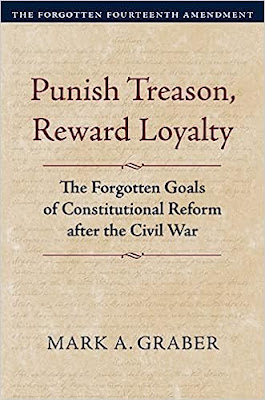
Mark A. Graber, Punish Treason, Reward Loyalty: The Forgotten Goals of Constitutional Reform after the Civil War (University of Kansas Press, 2023)
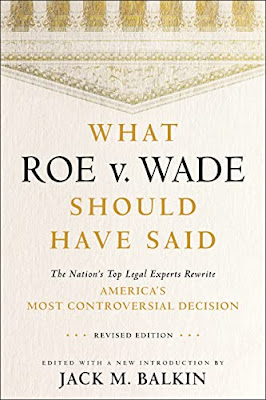
Jack M. Balkin, What Roe v. Wade Should Have Said: The Nation's Top Legal Experts Rewrite America's Most Controversial Decision - Revised Edition (NYU Press, 2023)

Andrew Koppelman, Burning Down the House: How Libertarian Philosophy Was Corrupted by Delusion and Greed (St. Martin’s Press, 2022)

Gerard N. Magliocca, Washington's Heir: The Life of Justice Bushrod Washington (Oxford University Press, 2022)
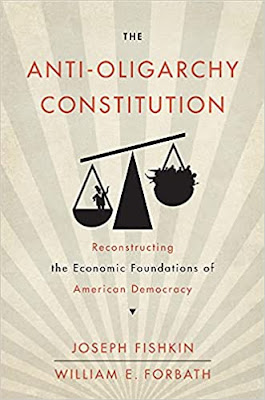
Joseph Fishkin and William E. Forbath, The Anti-Oligarchy Constitution: Reconstructing the Economic Foundations of American Democracy (Harvard University Press, 2022)
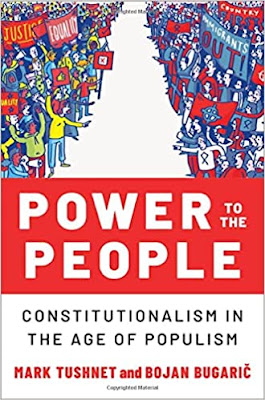
Mark Tushnet and Bojan Bugaric, Power to the People: Constitutionalism in the Age of Populism (Oxford University Press 2021).

Mark Philip Bradley and Mary L. Dudziak, eds., Making the Forever War: Marilyn B. Young on the Culture and Politics of American Militarism Culture and Politics in the Cold War and Beyond (University of Massachusetts Press, 2021).

Jack M. Balkin, What Obergefell v. Hodges Should Have Said: The Nation's Top Legal Experts Rewrite America's Same-Sex Marriage Decision (Yale University Press, 2020)

Frank Pasquale, New Laws of Robotics: Defending Human Expertise in the Age of AI (Belknap Press, 2020)

Jack M. Balkin, The Cycles of Constitutional Time (Oxford University Press, 2020)

Mark Tushnet, Taking Back the Constitution: Activist Judges and the Next Age of American Law (Yale University Press 2020).

Andrew Koppelman, Gay Rights vs. Religious Liberty?: The Unnecessary Conflict (Oxford University Press, 2020)

Ezekiel J Emanuel and Abbe R. Gluck, The Trillion Dollar Revolution: How the Affordable Care Act Transformed Politics, Law, and Health Care in America (PublicAffairs, 2020)

Linda C. McClain, Who's the Bigot?: Learning from Conflicts over Marriage and Civil Rights Law (Oxford University Press, 2020)
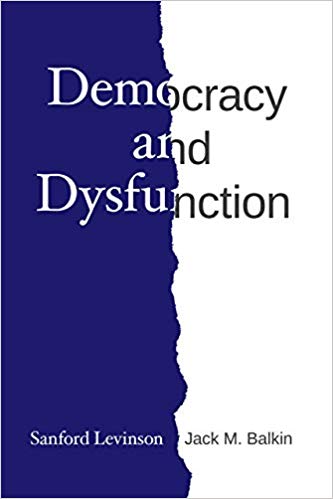
Sanford Levinson and Jack M. Balkin, Democracy and Dysfunction (University of Chicago Press, 2019)

Sanford Levinson, Written in Stone: Public Monuments in Changing Societies (Duke University Press 2018)

Mark A. Graber, Sanford Levinson, and Mark Tushnet, eds., Constitutional Democracy in Crisis? (Oxford University Press 2018)

Gerard Magliocca, The Heart of the Constitution: How the Bill of Rights became the Bill of Rights (Oxford University Press, 2018)

Cynthia Levinson and Sanford Levinson, Fault Lines in the Constitution: The Framers, Their Fights, and the Flaws that Affect Us Today (Peachtree Publishers, 2017)

Brian Z. Tamanaha, A Realistic Theory of Law (Cambridge University Press 2017)

Sanford Levinson, Nullification and Secession in Modern Constitutional Thought (University Press of Kansas 2016)

Sanford Levinson, An Argument Open to All: Reading The Federalist in the 21st Century (Yale University Press 2015)

Stephen M. Griffin, Broken Trust: Dysfunctional Government and Constitutional Reform (University Press of Kansas, 2015)

Frank Pasquale, The Black Box Society: The Secret Algorithms That Control Money and Information (Harvard University Press, 2015)

Bruce Ackerman, We the People, Volume 3: The Civil Rights Revolution (Harvard University Press, 2014)
Balkinization Symposium on We the People, Volume 3: The Civil Rights Revolution

Joseph Fishkin, Bottlenecks: A New Theory of Equal Opportunity (Oxford University Press, 2014)

Mark A. Graber, A New Introduction to American Constitutionalism (Oxford University Press, 2013)

John Mikhail, Elements of Moral Cognition: Rawls' Linguistic Analogy and the Cognitive Science of Moral and Legal Judgment (Cambridge University Press, 2013)

Gerard N. Magliocca, American Founding Son: John Bingham and the Invention of the Fourteenth Amendment (New York University Press, 2013)

Stephen M. Griffin, Long Wars and the Constitution (Harvard University Press, 2013)

Andrew Koppelman, The Tough Luck Constitution and the Assault on Health Care Reform (Oxford University Press, 2013)

James E. Fleming and Linda C. McClain, Ordered Liberty: Rights, Responsibilities, and Virtues (Harvard University Press, 2013)
Balkinization Symposium on Ordered Liberty: Rights, Responsibilities, and Virtues

Andrew Koppelman, Defending American Religious Neutrality (Harvard University Press, 2013)

Brian Z. Tamanaha, Failing Law Schools (University of Chicago Press, 2012)

Sanford Levinson, Framed: America's 51 Constitutions and the Crisis of Governance (Oxford University Press, 2012)

Linda C. McClain and Joanna L. Grossman, Gender Equality: Dimensions of Women's Equal Citizenship (Cambridge University Press, 2012)

Mary Dudziak, War Time: An Idea, Its History, Its Consequences (Oxford University Press, 2012)

Jack M. Balkin, Living Originalism (Harvard University Press, 2011)

Jason Mazzone, Copyfraud and Other Abuses of Intellectual Property Law (Stanford University Press, 2011)

Richard W. Garnett and Andrew Koppelman, First Amendment Stories, (Foundation Press 2011)

Jack M. Balkin, Constitutional Redemption: Political Faith in an Unjust World (Harvard University Press, 2011)

Gerard Magliocca, The Tragedy of William Jennings Bryan: Constitutional Law and the Politics of Backlash (Yale University Press, 2011)

Bernard Harcourt, The Illusion of Free Markets: Punishment and the Myth of Natural Order (Harvard University Press, 2010)

Bruce Ackerman, The Decline and Fall of the American Republic (Harvard University Press, 2010)
Balkinization Symposium on The Decline and Fall of the American Republic

Ian Ayres. Carrots and Sticks: Unlock the Power of Incentives to Get Things Done (Bantam Books, 2010)

Mark Tushnet, Why the Constitution Matters (Yale University Press 2010)
Ian Ayres and Barry Nalebuff: Lifecycle Investing: A New, Safe, and Audacious Way to Improve the Performance of Your Retirement Portfolio (Basic Books, 2010)
.jpg)
Jack M. Balkin, The Laws of Change: I Ching and the Philosophy of Life (2d Edition, Sybil Creek Press 2009)

Brian Z. Tamanaha, Beyond the Formalist-Realist Divide: The Role of Politics in Judging (Princeton University Press 2009)
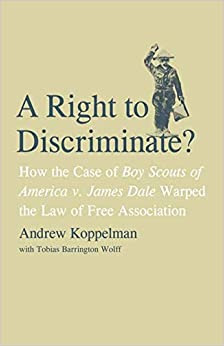
Andrew Koppelman and Tobias Barrington Wolff, A Right to Discriminate?: How the Case of Boy Scouts of America v. James Dale Warped the Law of Free Association (Yale University Press 2009)

Jack M. Balkin and Reva B. Siegel, The Constitution in 2020 (Oxford University Press 2009)
Heather K. Gerken, The Democracy Index: Why Our Election System Is Failing and How to Fix It (Princeton University Press 2009)

Mary Dudziak, Exporting American Dreams: Thurgood Marshall's African Journey (Oxford University Press 2008)

David Luban, Legal Ethics and Human Dignity (Cambridge Univ. Press 2007)

Ian Ayres, Super Crunchers: Why Thinking-By-Numbers is the New Way to be Smart (Bantam 2007)

Jack M. Balkin, James Grimmelmann, Eddan Katz, Nimrod Kozlovski, Shlomit Wagman and Tal Zarsky, eds., Cybercrime: Digital Cops in a Networked Environment (N.Y.U. Press 2007)
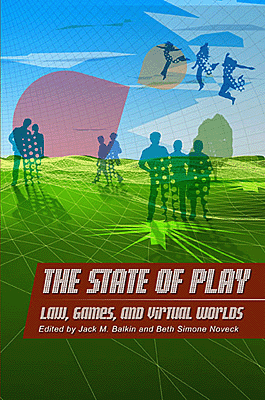
Jack M. Balkin and Beth Simone Noveck, The State of Play: Law, Games, and Virtual Worlds (N.Y.U. Press 2006)

Andrew Koppelman, Same Sex, Different States: When Same-Sex Marriages Cross State Lines (Yale University Press 2006)
Brian Tamanaha, Law as a Means to an End (Cambridge University Press 2006)
Sanford Levinson, Our Undemocratic Constitution (Oxford University Press 2006)
Mark Graber, Dred Scott and the Problem of Constitutional Evil (Cambridge University Press 2006)
Jack M. Balkin, ed., What Roe v. Wade Should Have Said (N.Y.U. Press 2005)
Sanford Levinson, ed., Torture: A Collection (Oxford University Press 2004)
Balkin.com homepage
Bibliography
Conlaw.net
Cultural Software
Writings
Opeds
The Information Society Project
BrownvBoard.com
Useful Links
Syllabi and Exams